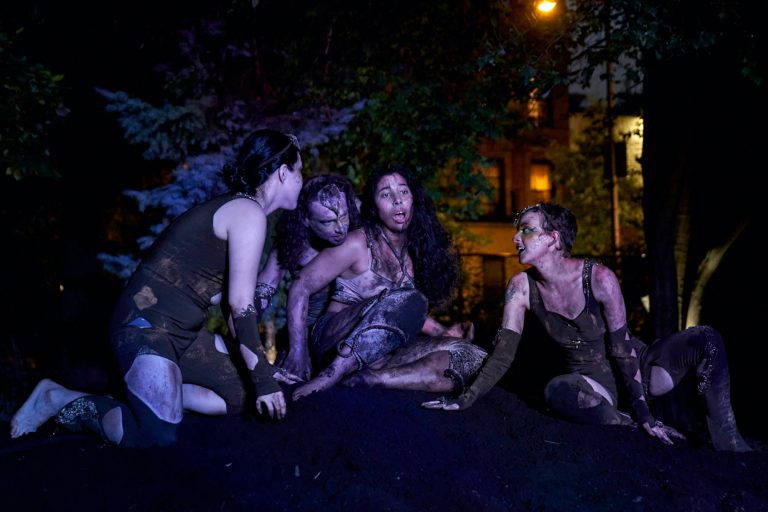On Thursday, June 20, the humid, muggy air, the dancing of fireflies among leaves and flowers, and handfuls of ripe mulberries falling from the sky over New York’s Paradise Gardens set the stage for the premiere of Alexandra Neuman’s cosmological story of abortion.
The event is scheduled to take place around the summer solstice on a garden mound. Collective womb (2024) reframes abortion as a creationist myth central to the development of our universe, complete with live music, large puppets, womb cookies, and moments of humor. After opening in a Manhattan public park, the 45-minute show will be free to the public at 601 Art Space on Friday, July 26 and Saturday, July 27.

As an interdisciplinary artist and psychotherapist, much of Newman’s work revolves around realigning the human body with its surrounding ecology. Collective wombShe and co-directors Raychel Ceciro and Logan Gabrielle Schulman strip away the clinical context and sociopolitical discourse surrounding the abortion process, instead presenting its origins through a composite mythology that references spiritual and cosmic origin stories from around the world.
Before sunset Thursday, Newman and performers Teshale Nuer, Nic Koller and Blaze Hubbell led the audience in a choreographed singing circle that asked the audience to connect with the Earth and listen to its voice. The story begins with a genderless clay figure (played by the charming Irisdelia Garcia) and three snake-like friends who are energized by the clay figure’s menstrual behavior – a gift from the moon. At one point, the sun forcefully impregnates the clay figure, sending them into insanity and depression, as the inability to menstruate causes the snakes to disappear. The moon and stars grant the clay figure the power to abort, which causes the snakes to return and causes the clay figure’s heart to burst with thousands of seedlings that make up the first generation of humans on Earth.


While the choreography, props, and performances are all carefully designed and artistic, the work does not take itself too seriously, but rather leans humorously into the confusion of performance art through exaggerated props and lines, audience response cue cards, and engaging the audience throughout the performance. By engaging all the senses, what could easily have seemed pretentious and incomprehensible becomes easy to appreciate and memorable. It is also an interesting shift from the strictly medical narrative of “abortion is medical care,” instead emphasizing that abortion is natural; abortion is a beginning; abortion is vital; abortion is not a termination, but simply an exchange of energy between the body and the world.


